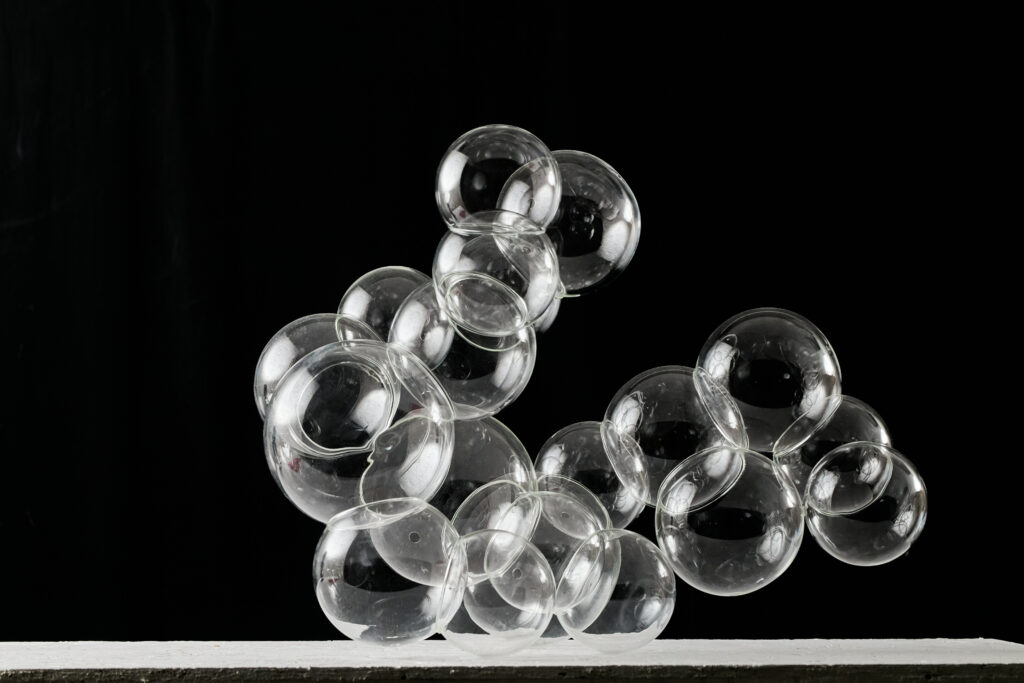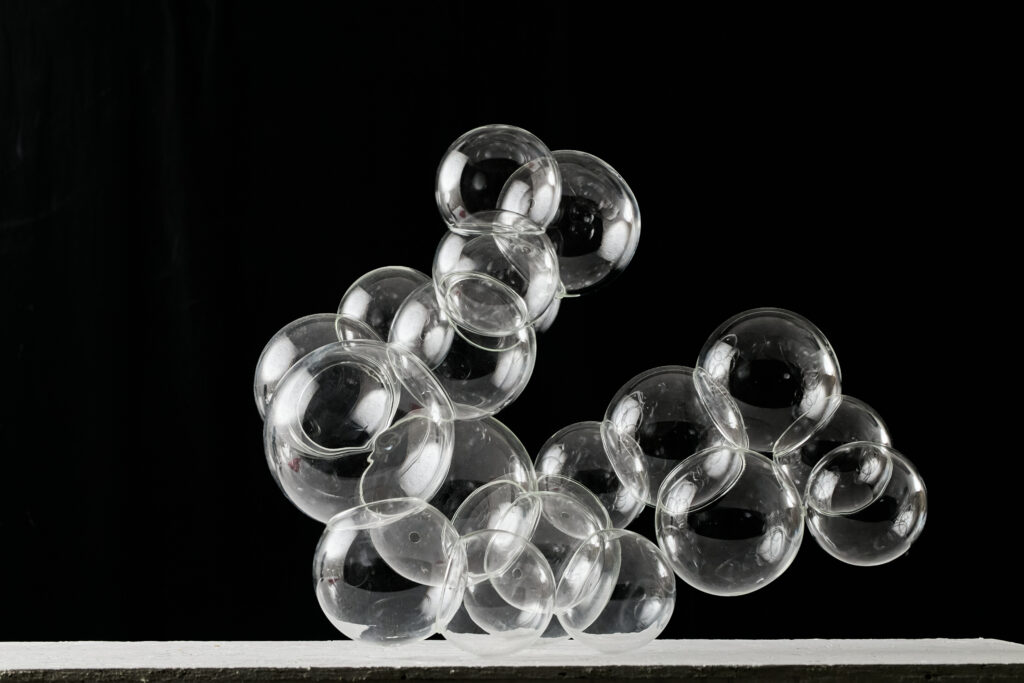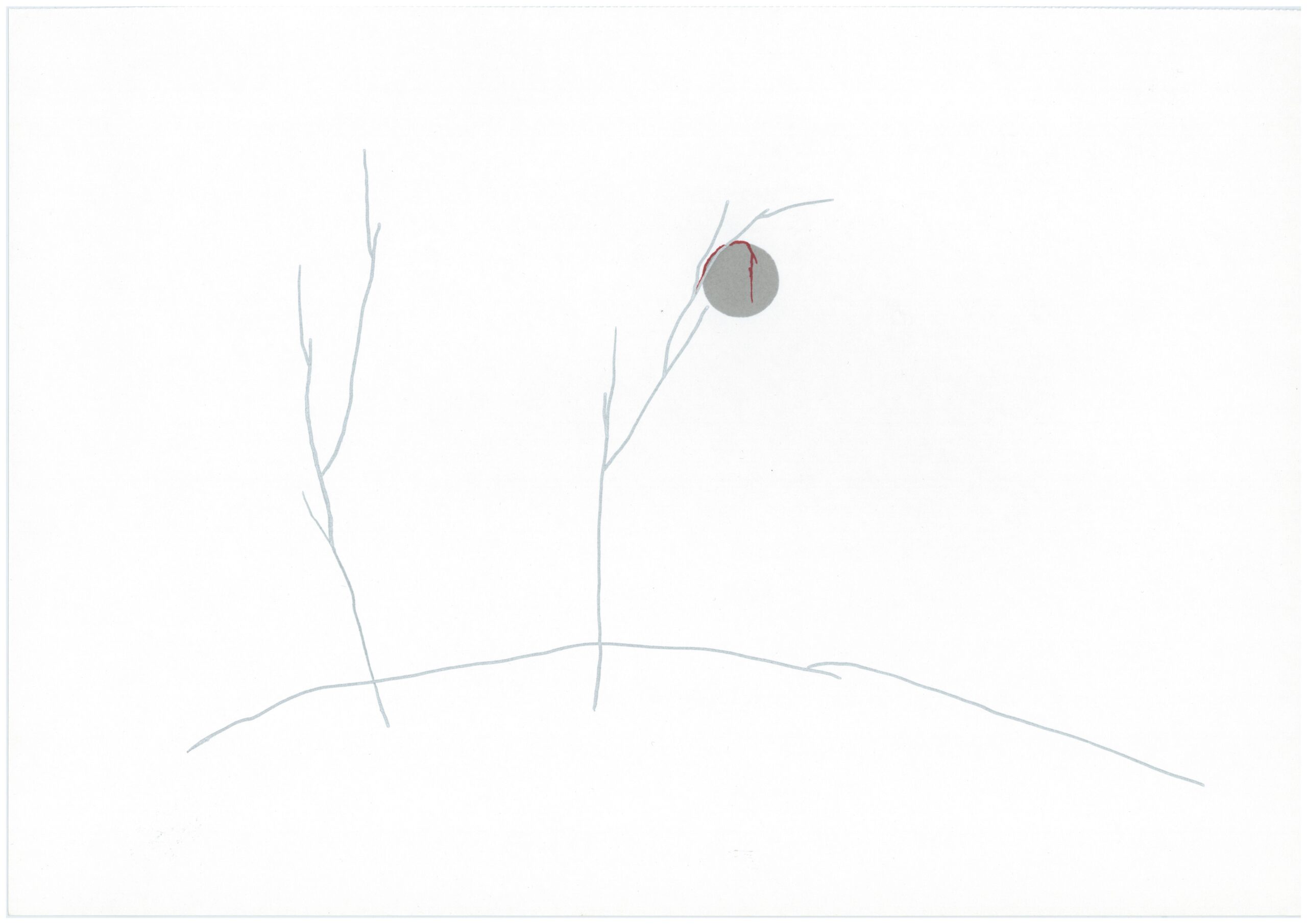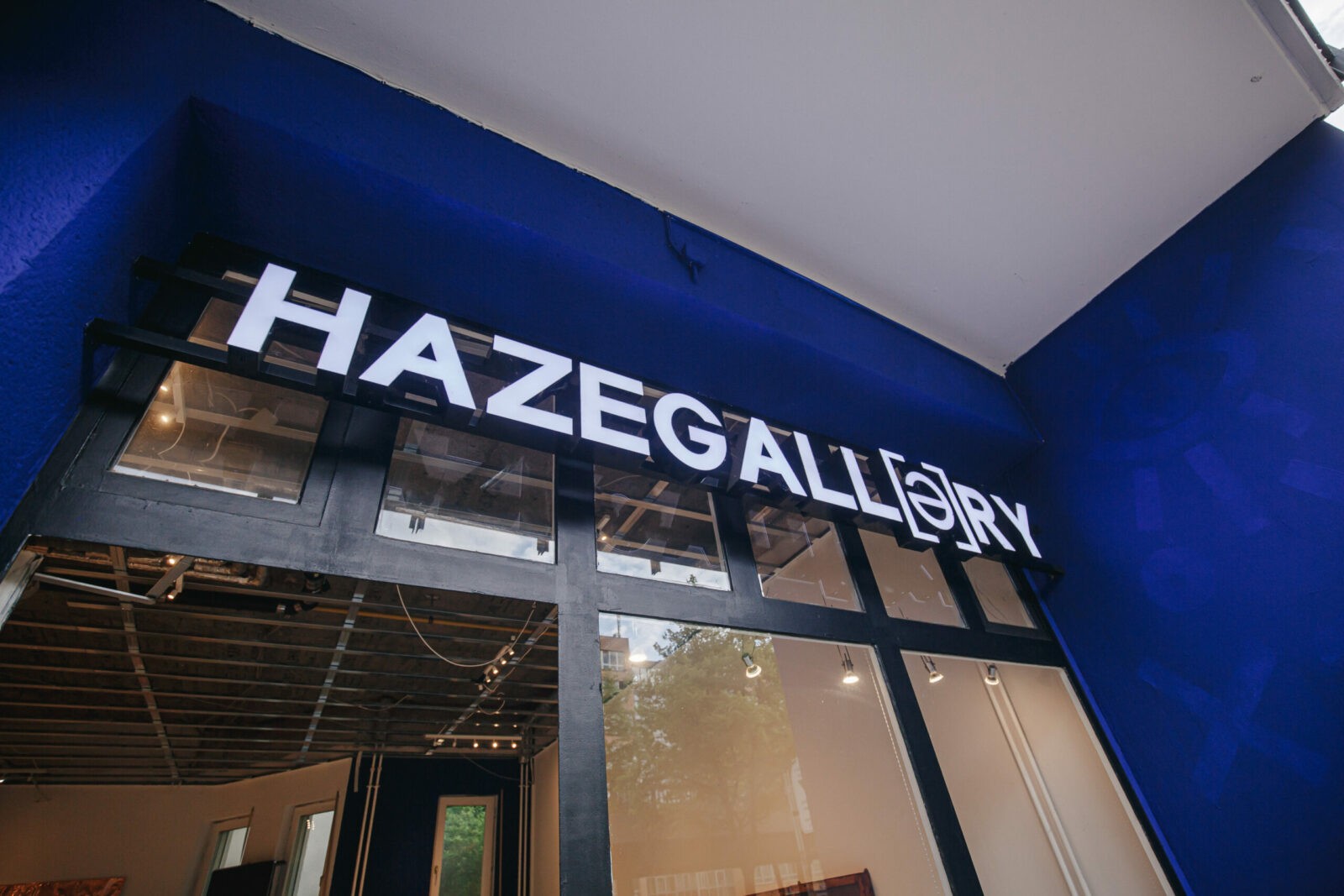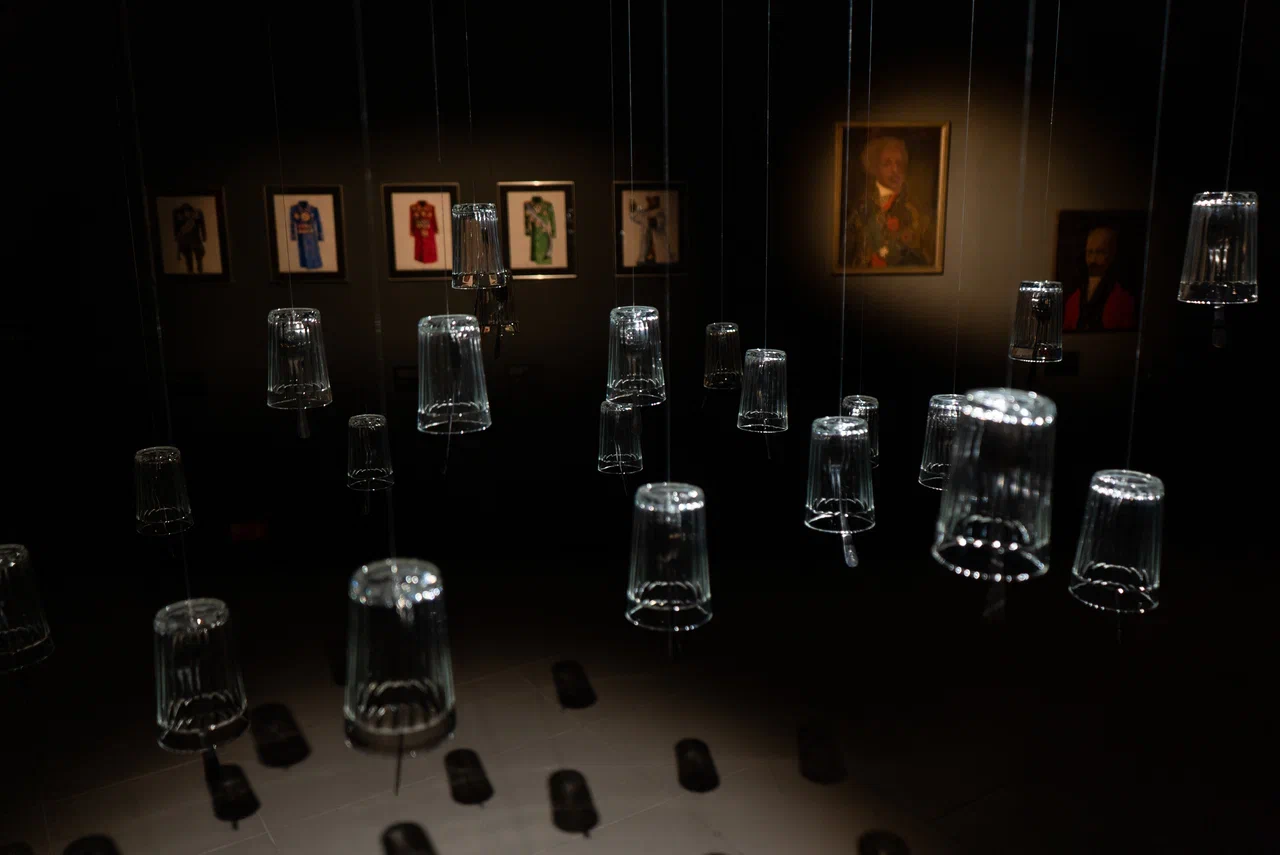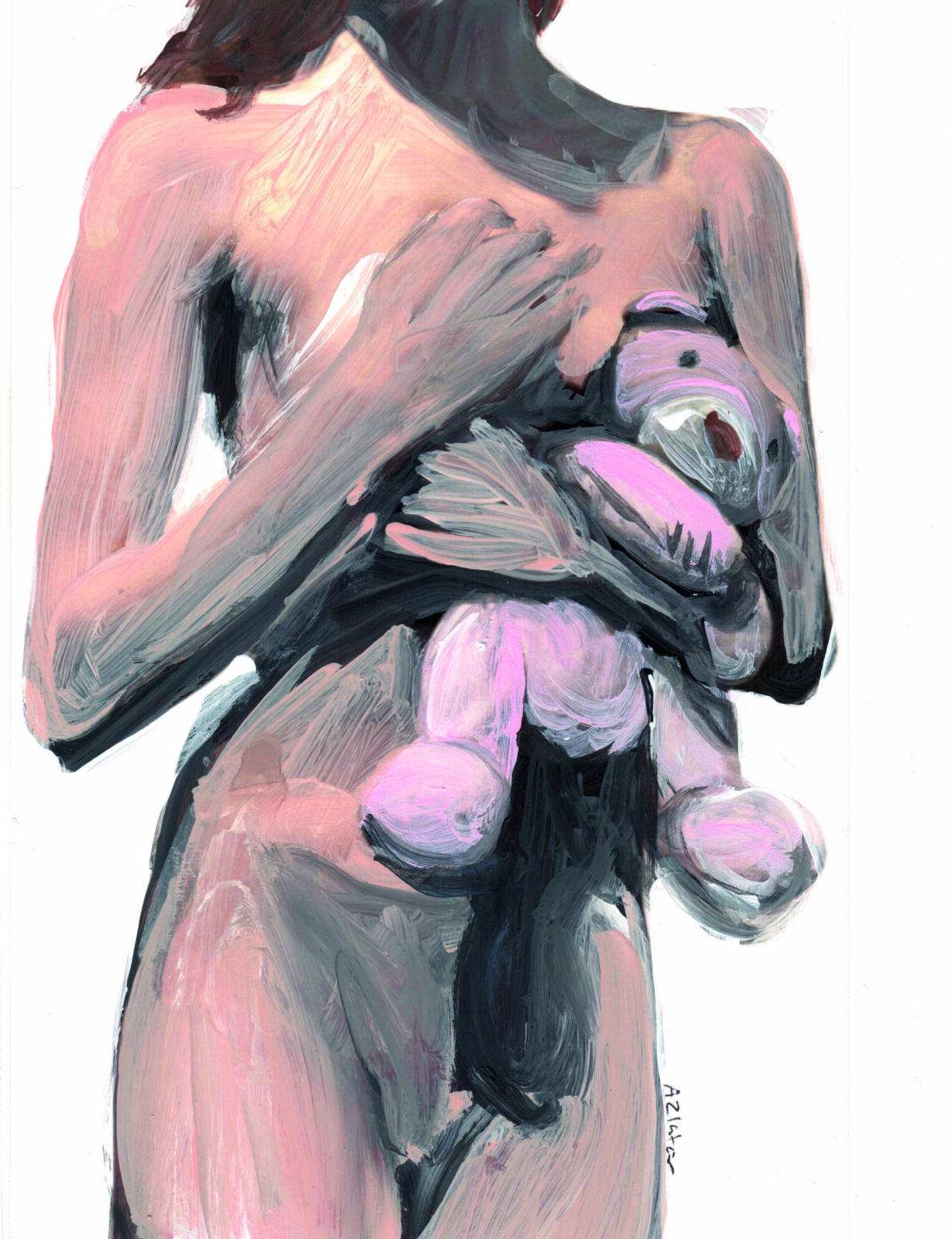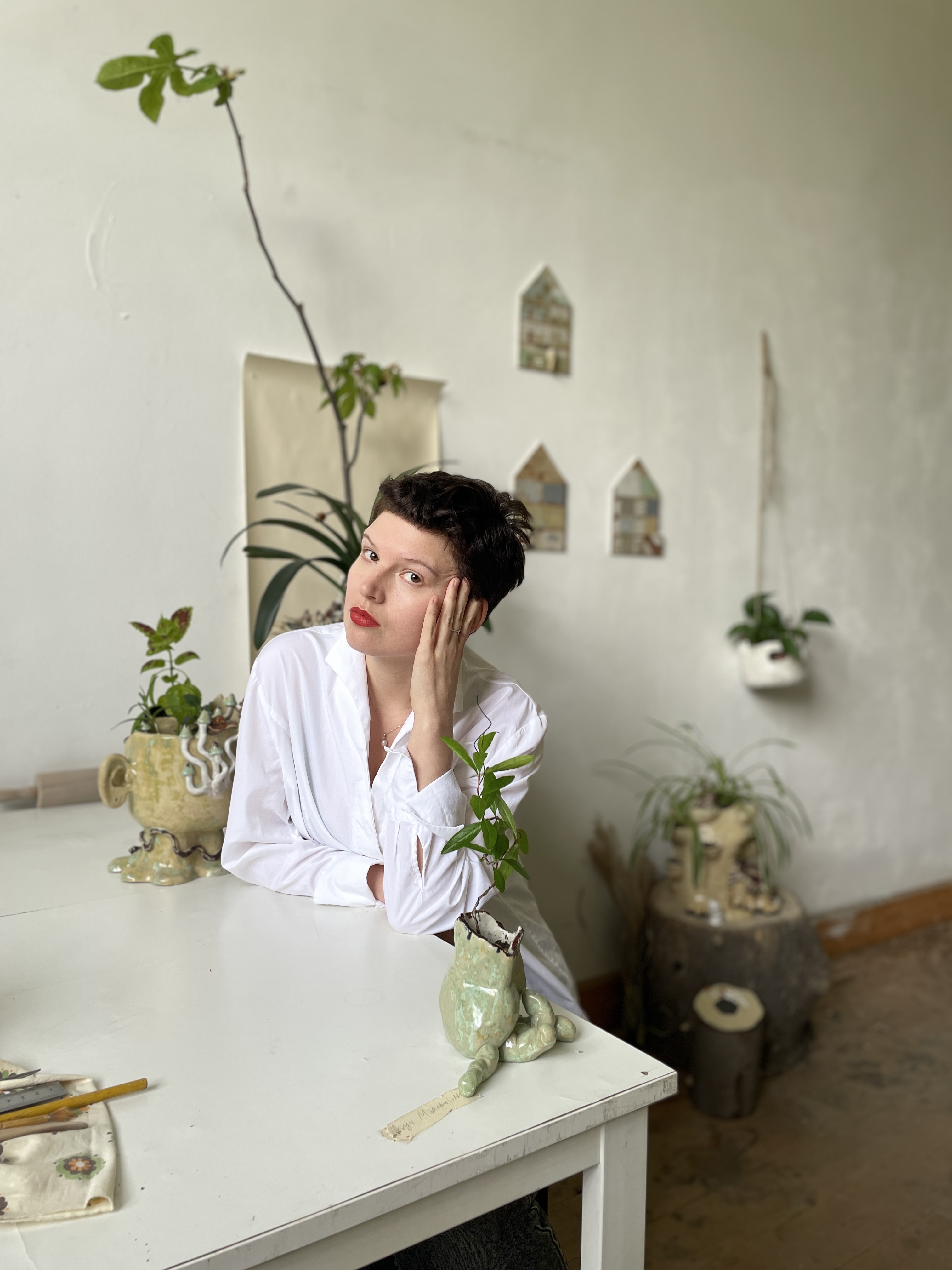Interview with young St. Petersburg artist Sergey Kolosov about his path in the creative environment, working with glass, recognition and money.
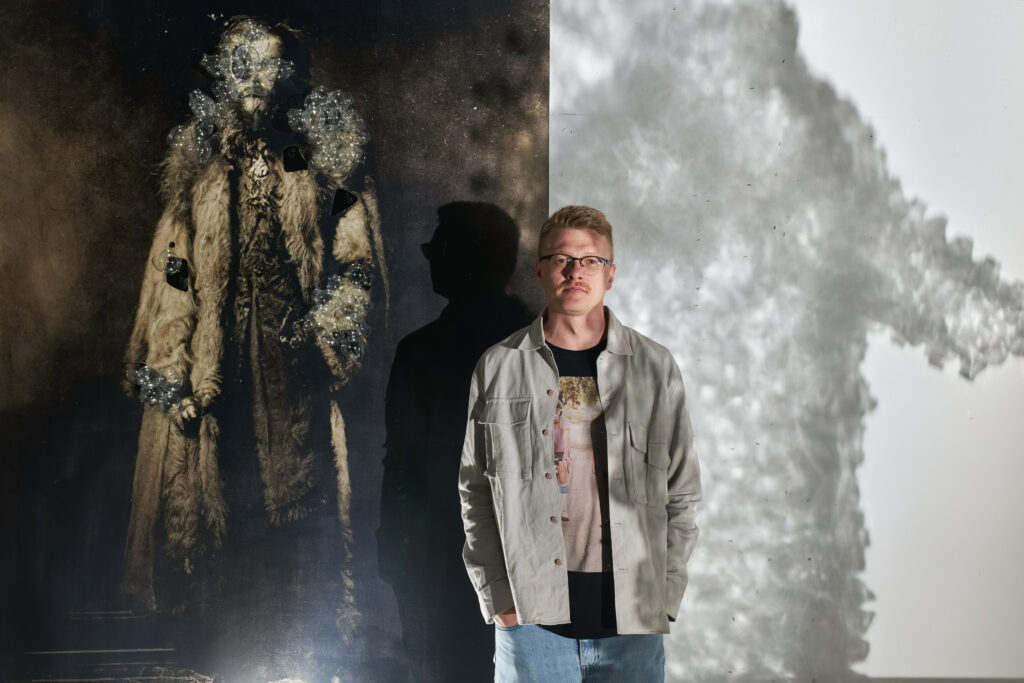
Tell us a little about your path. How did you become an artist?
From 1st to 9th grade I studied at the Art and Aesthetic Lyceum No. 581, and, naturally, everyone around me drew very well. My first impulse was to graffiti. In 2001 my friends organized a graffiti team WAC (“wild alcoholic crew” exists to this day, a real underground), but I couldn’t find myself in graffiti. Later my interest in art returned, but already to experiments in painting. In 2006 with the same friends we organized the group PSY.X.SISTEM, there were 6 of us, we were creating wild things. The first exhibition of the project took place in 2007 in the club “Griboedov”. Until 2011 we were active in exhibition activity, after 2012 I was already moving alone.
In general, there were a lot of things, but the most important thought: “If I hadn’t been organizing exhibitions myself, I don’t think I would have gotten very far”.
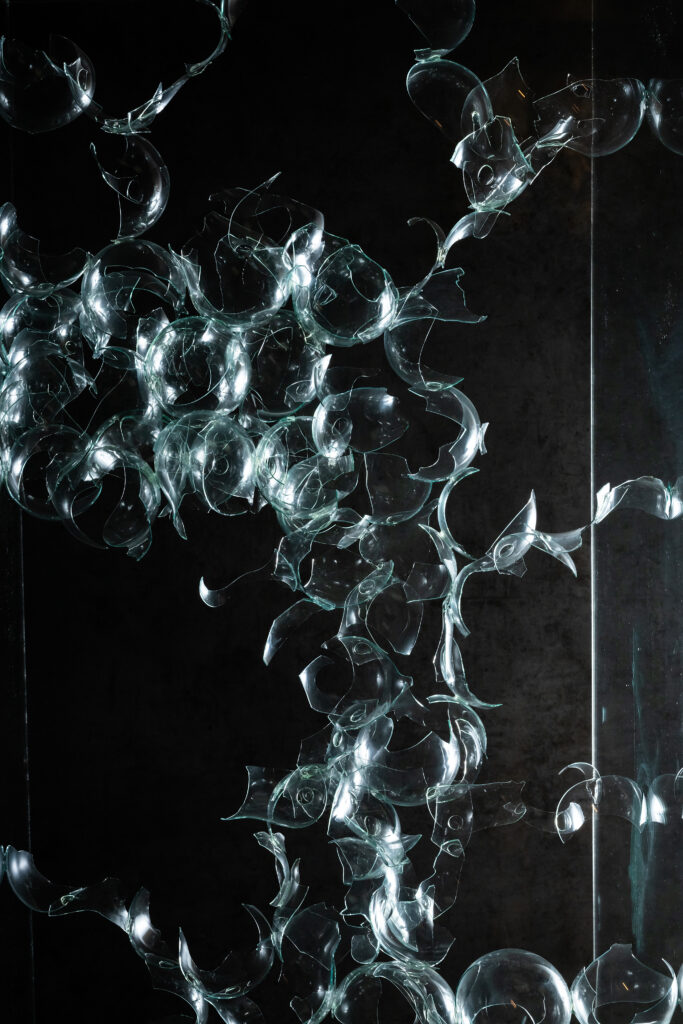
Where is your workshop located?
Since 2020, I have been based at the Nepokoryonye residence. We are located at 17 Nepokoryonye Avenue. The residence has 10 workshops and its own gallery. A very atmospheric place with a rich 17-year history, and I’m afraid to even count how many famous artists have passed through these walls.
How are your works born: from the initial idea to the finished object?
It always happens in flashes. An idea appears, and immediately the thought process of its realization begins, if, of course, you managed to catch the flash. Such moments should not be missed. Since the works are mostly abstract, everything depends on the inner state. On this basis, the work is modified.
You work in different directions: painting, sculpture, even video art. In the last few years, your ideas have been reflected in glass objects. Why glass? How did you come to it?
This is just one of the flashes that I caught on to and am still working with.
Glass came quite by accident.
It started out as a series of objects in which I clamped various objects, mostly perishables, between two panes of glass and observed the resulting pattern. Could I have thought at the time that this would lead me to broken light bulbs. The idea came instantly and left no room for anything else, captivating me completely. And the most interesting thing is that it was not alone, but with a complete technological process, apparently, someone sent someone.
What are the challenges of working with glass? Apart from the obvious – you can cut yourself.
Glass splinters, and there are gloves for everything else.
In my case, the difficulty is the constant struggle to keep the glass clean. If you compare the first works and what I do now, it is, of course, heaven and earth, at least on the technical side. I perfected the whole technological process myself, by trial and error, and how many works I broke until I realized how to work with all this – can not count. Try to remove the stigma from an old Soviet light bulb, how long would it take you? It took me about a year.
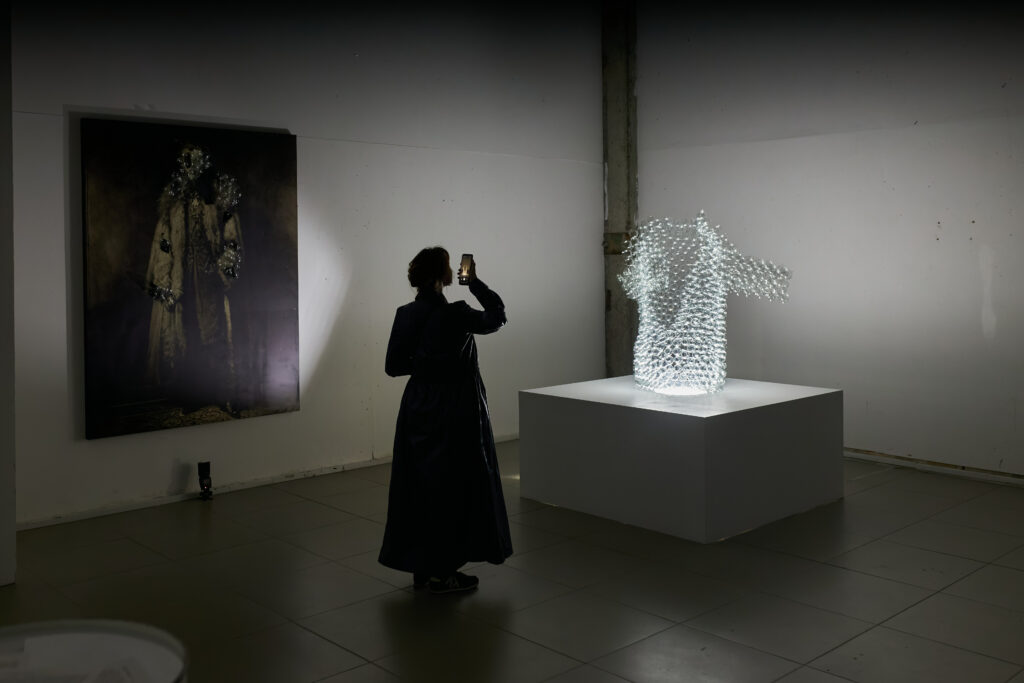
In one of your interviews you say: “For most of my life I have been thinking about the influence of time on the body and consciousness. In more recent work, the reasoning turns to the structure of time: does it have a form and a shell? What does the passage from past to future through the present carry?” Can you explain this idea of time with an example from one of your works?
I believe that time has a structure, like water, it’s just not accessible to our eye.
Well here I dared to suggest what it looks like, it is the thin broken glass that conveys the fragility of a moment in time as much as possible. We don’t appreciate the “here and now” moment and mostly live in the future or the past, and it is this moment that carries the maximum significance. Our decision or perception of the world around us now determines our future and our ability to preserve the past.
Can the degree of the original concept change in the process of working on a project? Why does this happen?
When it comes to my abstract works, things can change as I am constantly turning them around. In most of the works I stick to the original idea. Of course, in the process of experimentation you find something and it changes the original vector.
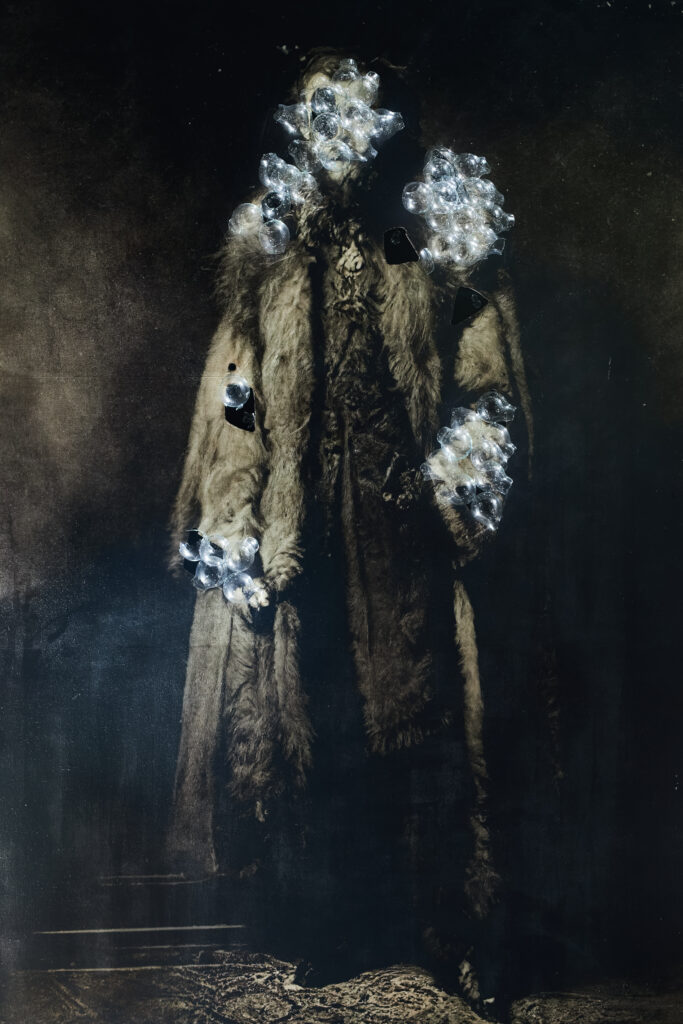
How much does your work cost?
If we are talking about a series of glass pieces, such as Portraits, prices start at 80,000 ₽, cubes from 120,000 ₽. The most expensive work so far sold for 500,000 ₽.
Buying my work has started relatively recently, in the last 3 years. I used to put everything I earned from other activities into art and didn’t even really hope that I would start selling, of course I dreamed about it, but for me it was the most important civilized expression. If you count from the first exhibition in 2007, I sold a couple of works in 13 years, but that didn’t stop me. I even tried to quit once, but it didn’t work.
Let’s say I’m an aspiring artist with an academic background and a fervent desire for recognition and money. Everything is great, except for one thing – in my pocket I have 7 thousand 500 rubles, and this is barely enough for me to paint and stretcher. What to do? Where to start? What advice would you give me?
Find the nearest fabric store, buy the cheapest linen. Next stop is the building supply store. There we take PVA glue and whitewash, boards and go to pound the subframe, stretch the linen and primed. We repeat this every time we have money. That’s the recipe for success. That’s how it was for me.
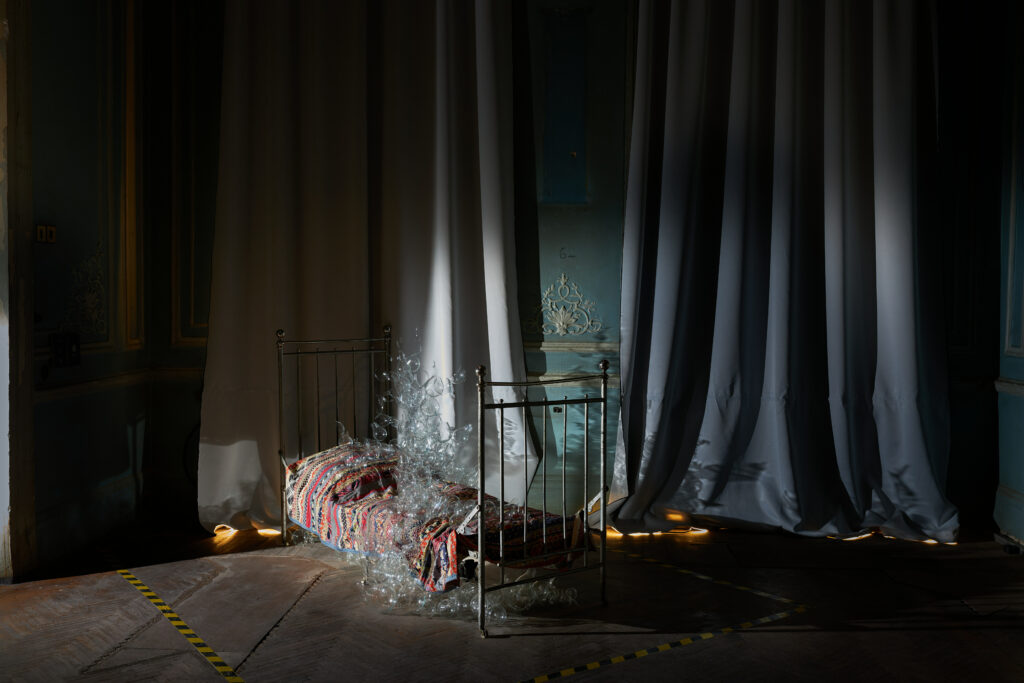
Who buys your artwork? How can you describe “your” collector?
For the most part, I don’t know those who buy my works, as it’s mostly galleries that do the selling, but because of the specific nature of my work, I do occasionally meet buyers when I’m assembling. They are of course very different, mostly people who already live with art.
What project are you working on now?
I continue to work with glass, I’m perfecting my cubes. I am also working on a large “portrait” series, experimenting with graphics and preparing a completely new project. Perhaps I will have time for everything this year.
